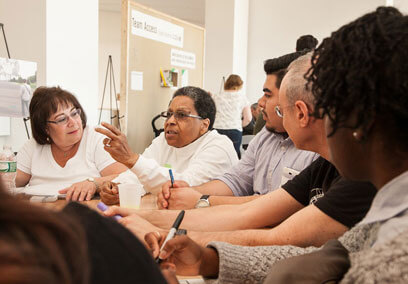By Bill Parry
When Borough President Melinda Katz opposed the idea of closing large parts of Flushing Meadows Corona Park this summer so concert promoters could stage music festivals, she wanted to keep access open to thousands of families and residents who enjoy the park.
The Madison Square Garden Company, AEG Live and Founders Entertainment were all turned down by the city Parks Department last week, leaving the 898-acre park open to users at least until the US Open tennis tournament returns in late August.
A special bond exists between the park and the neighborhoods surrounding it that is best exemplified by a program that began in 2014. The Parks Department, the Design Trust for Public Space and the Queens Museum selected 23 residents from ages 15 to 70, with origins in 12 countries, speaking eight languages, from Flushing, Corona, Kew Garden Hills and other neighborhoods to form Community Design School. Over the course of 12 weeks they gathered at the Queens Museum for intensive sessions conducted by Design Trust Fellows to analyze, plan, debate and design new ideas for the park’s biggest challenges and to increase public use and access.
“Initially we thought it would be like most design sessions, some participation and then it disappears,” Richmond Hill’s Anandi Premall said. “What happened here? Our voices were really heard and we were respected as part of the community in creating the park. Real people in Queens. And our voices are being heard and respected and we’re part of a creative process with access to the whole process.”
The 23 members of the Community Design School are now advocates and partners with NYC Parks’ effort to initiate community-led enhancements in the park. They created handbooks in English and Spanish that were recently released, with a Chinese version to come, which helps guide newcomers to the fourth largest park in the city.
Their ideas included a new generation of information kiosks, art installations at park entrances, wayfinding maps and a sensory play area for children with special needs, which they tested as pop-ups. They still advocate these to be part of the park.
“When changes are coming to a neighborhood, the problem is finding out after the plan has already been decided, or when politicians notify the community in a way that feels like it’s just about checking a box,” Corona’s Libertad Sanchez said. “But there are also times when it seems that the community is not really interested in knowing. That’s when you need education.”
The Community Design School offered an open and collaborative environment that brought residents, neighborhood organizations and public service stewards together to learn, create and design. The school’s curriculum details the multifaceted processes to realize public designs, from identifying community needs and developing ideas, to building consensus and support, navigating municipal procedures and executing final plans.
“It was great to see the Department of Transportation present their projects around the park and to see that they are looking to work in coordination with community members and the Parks Department,” Corona’s Esther Sanchez said.
Woodside resident Jason Chin-Fatt comes up with new ideas simply by visiting the park.
“Selfishly, when I thought about the project, I thought ‘I can tell them all the problems I see riding my bike along the path,’ something like that, but I came to see that there are more uses and more features than I knew,” he said. “It surprised me — the amount and variety of users. Not just cyclists like me, but baseball players, people with baby carriages going to obscure playgrounds.”
Elmhurst’s Suzy Qui agreed.
“I’d love to do more with the open green spaces, the grassy fields all the way off in the corners of the park,” she said. “It was good to collaborate. Usually when agencies are involved it is very formal, but this wasn’t.”
Reach reporter Bill Parry by e-mail at bparr































